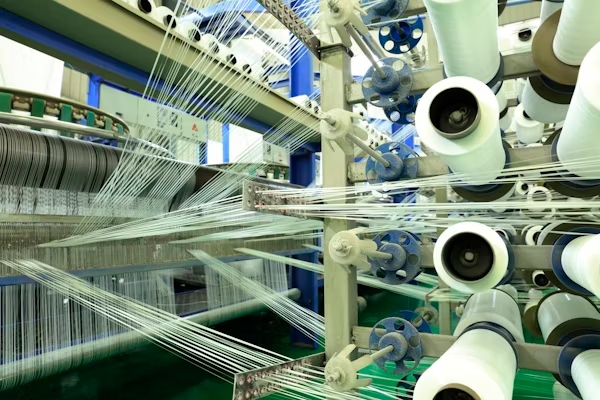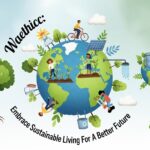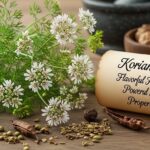In the face of mounting environmental challenges, the textile industry stands at a crucial crossroads. The demand for eco-friendly materials and ethical production methods has never been greater, leading to innovative solutions that redefine how fabrics are made, used, and recycled. Among these breakthroughs, Woolrec has emerged as a transformative concept—pioneering sustainable textile production while honoring the rich heritage of wool craftsmanship. This article delves into Woolrec, exploring its origins, technology, environmental impact, and its potential to reshape the global fashion and textile landscape.
What Is Woolrec?
Woolrec—short for Wool Recycling—is a cutting-edge approach to circular textile manufacturing that focuses on recovering, reprocessing, and reusing wool fibers. Rather than relying solely on virgin materials, Woolrec leverages post-consumer and pre-consumer wool waste to create high-quality fabrics with minimal environmental footprint.
This innovative method combines traditional wool recovery techniques with advanced mechanical and chemical recycling technologies, ensuring that discarded garments and production scraps are reintroduced into the value chain instead of ending up in landfills. The result is a sustainable wool fiber that maintains its softness, warmth, and durability—without the ecological cost of conventional wool production.
The Technology Behind Woolrec
The Woolrec process employs a multi-stage system designed to maximize fiber recovery while minimizing resource use. Here’s how it works:
-
Collection and Sorting
Wool waste is gathered from various sources, including textile mills, garment factories, and post-consumer clothing. Automated sorting systems categorize the materials based on color, fiber type, and quality—reducing the need for dyeing and chemical treatments. -
Cleaning and Preparation
The collected wool undergoes an eco-friendly cleaning process using water-efficient and biodegradable detergents. This step removes impurities like dust, oils, and dyes while preserving the natural properties of the fibers. -
Mechanical and Chemical Recycling
Woolrec combines mechanical fiber shredding with low-impact chemical treatment to rejuvenate worn or short fibers. This hybrid approach ensures that recycled wool achieves near-virgin quality, maintaining texture and strength. -
Re-Spinning and Fabrication
The regenerated fibers are blended with virgin wool or other sustainable fibers (like organic cotton or Tencel) to produce yarns suitable for weaving or knitting. The outcome is a wide range of textiles—soft, durable, and eco-responsible.
Why Woolrec Matters in Today’s Textile Industry
The textile sector is among the most resource-intensive industries on the planet, contributing significantly to carbon emissions, water pollution, and waste generation. Wool, though natural and biodegradable, still has a substantial environmental impact due to land use and methane emissions from sheep farming.
Woolrec offers a sustainable alternative by closing the loop—repurposing waste and extending the life cycle of wool fibers. This reduces dependency on new raw materials and lowers the carbon footprint of textile manufacturing.
Some key environmental benefits include:
-
Reduced Water and Energy Consumption: Recycling wool requires up to 70% less water and energy compared to virgin wool processing.
-
Lower Carbon Emissions: Every ton of recycled wool helps cut greenhouse gas emissions by avoiding new wool production.
-
Waste Minimization: Woolrec diverts tons of textile waste from landfills annually.
-
Preservation of Biodiversity: By limiting new wool production, Woolrec helps mitigate overgrazing and land degradation.
The Circular Economy in Action
Woolrec embodies the principles of the circular economy—designing products and processes that keep resources in use for as long as possible. Instead of the traditional take-make-dispose model, Woolrec promotes a regenerative cycle of textile reuse and renewal.
Fashion brands and textile producers adopting Woolrec technologies are finding ways to create “closed-loop” production models, where garments can be recycled back into new clothing without loss of quality or style. This approach not only benefits the environment but also appeals to the growing number of eco-conscious consumers demanding transparency and sustainability from brands.
Applications of Woolrec in Modern Fashion
The versatility of Woolrec fibers makes them suitable for a wide range of applications across the fashion and interior design industries. Some popular uses include:
-
High-End Apparel: Recycled wool is used to craft luxury coats, sweaters, and scarves with the same softness and warmth as virgin wool.
-
Corporate Uniforms: Many organizations are adopting Woolrec fabrics for eco-friendly uniforms, showcasing their commitment to sustainability.
-
Home Textiles: From blankets to upholstery, Woolrec materials bring comfort and sustainability into home interiors.
-
Outdoor Gear: Blended recycled wool offers durability, insulation, and moisture control—ideal for performance wear and outerwear.
Woolrec and the Green Fashion Movement
As sustainability becomes a defining factor in consumer choices, Woolrec aligns perfectly with the goals of ethical fashion. Leading designers and brands are incorporating recycled wool into their collections, emphasizing that luxury and sustainability can coexist.
For instance, fashion houses embracing Woolrec technology highlight not only the eco-friendly aspect but also the story behind each product—giving customers a tangible connection to the sustainability journey. This transparency helps build trust, loyalty, and a sense of shared responsibility between brands and consumers.
Challenges and Future Prospects
Despite its promise, Woolrec faces a few challenges, such as:
-
Scaling Production: Recycling processes can be labor-intensive and require specialized facilities.
-
Fiber Degradation: Maintaining fiber strength after multiple recycling cycles remains a technical hurdle.
-
Market Awareness: Educating consumers about the value of recycled wool is essential to increase demand.
However, ongoing advancements in fiber engineering, coupled with global sustainability goals, position Woolrec as a key player in the future of green textiles. Collaborations between technology companies, fashion designers, and sustainability organizations are accelerating progress—paving the way for a fully circular wool economy.
Conclusion: A Step Toward a Greener Future
Woolrec is more than a technological innovation—it’s a vision for a more responsible textile future. By reimagining how wool is produced, used, and recycled, it proves that environmental stewardship and product excellence can go hand in hand.






